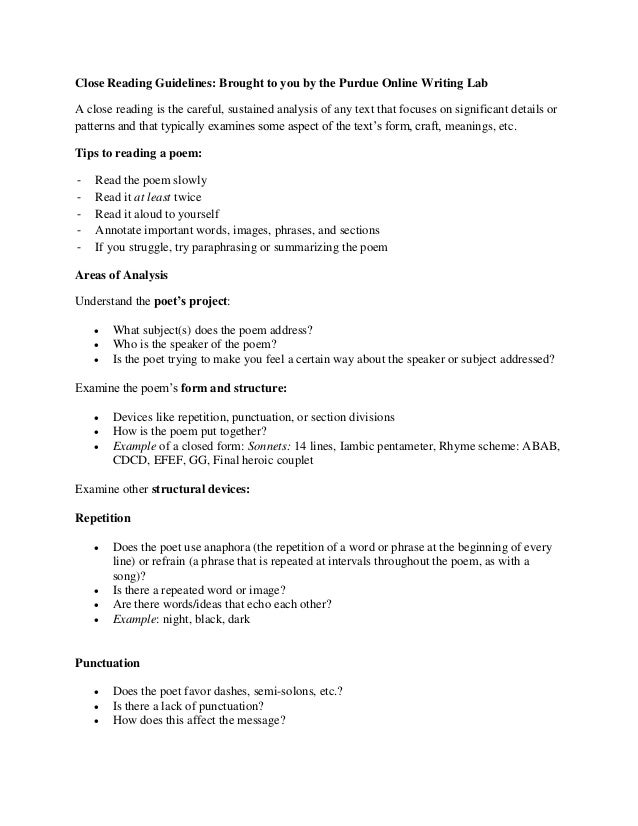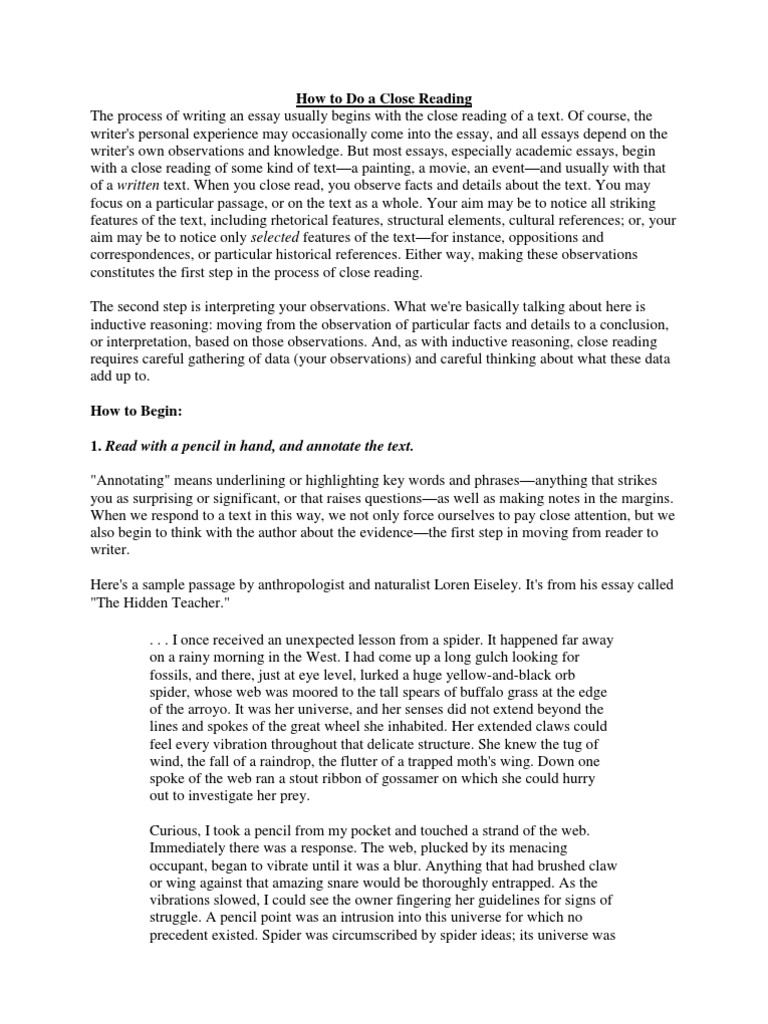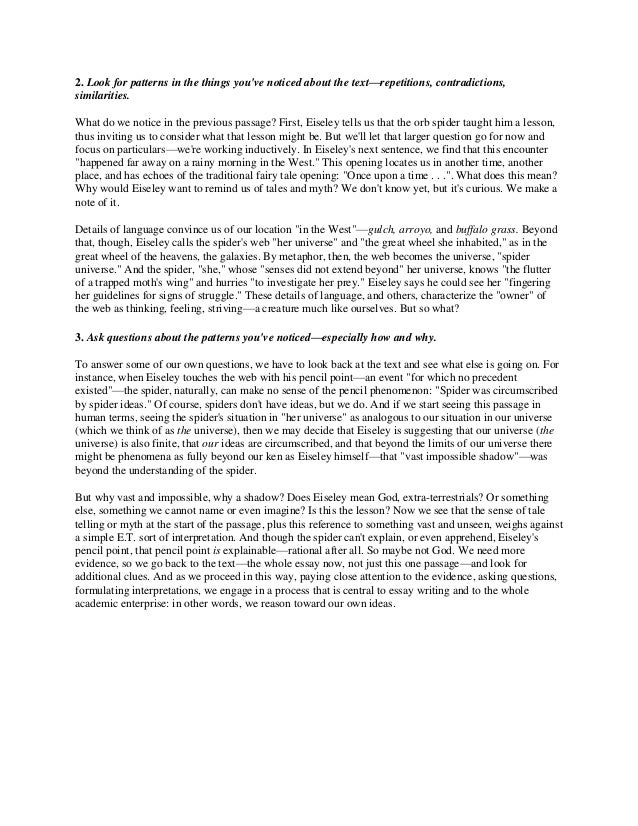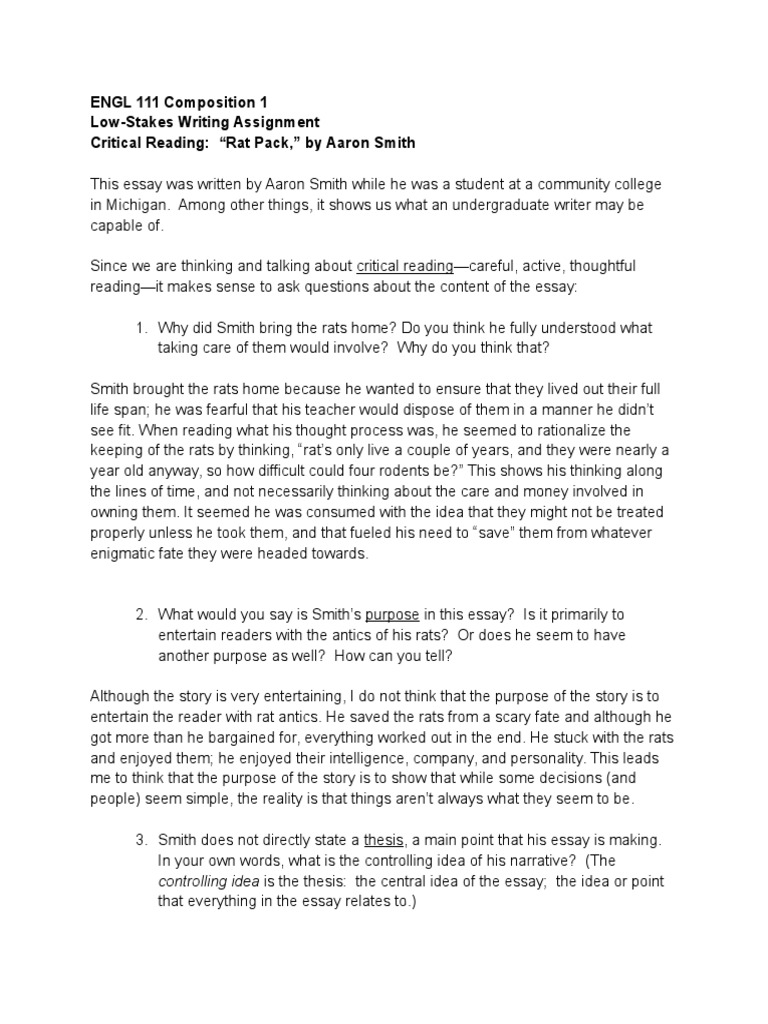
Definition of a Close Reading
· The purpose of close reading is to suspend personal judgment and examine a text in order to uncover and discover as much information as we can from it. In close reading we ask not just “what does this passage say?” but also “how does it say it?” and even “what does it not say?” · With a close-reading essay, you get to take a deep dive into a short passage from a larger text to study how the language, themes, and style create meaning. Writing one of these essays requires you to read the text slowly multiple times while paying attention to both what is being said and how the author is saying blogger.com: 8,1K When you close read, you observe facts and details about the text. You may focus on a particular passage, or on the text as a whole. Your aim may be to notice all striking features of the text, including rhetorical features, structural elements, cultural references; or, your aim may be to notice only selected features of the text—for instance, oppositions and correspondences, or

What is close reading essay?
How to write a CLOSE READING ESSAY • Identify and reflect on major themes in the book. • Analyze specific details, scenes, actions, and quotations in the text and discuss how they contribute to your • Extract as much information from a chosen passage of writing as possible. • Listen to and · A close reading essay is an in-depth paper that carefully studies a short work or a section of a longer one. Rather than treat the larger themes of the work alone, a close reading essay goes into details and substantiates observations with examples from the · With a close-reading essay, you get to take a deep dive into a short passage from a larger text to study how the language, themes, and style create meaning. Writing one of these essays requires you to read the text slowly multiple times while paying attention to both what is being said and how the author is saying blogger.com: 8,1K

What are the goals of close reading?
So, the close reading essay outline is the following: Introduction, where you explain why you have selected the topic. The central part, where you analyze the parts that have touched you. Conclusion, where you give the general impression from the literary work and give the summary of all that has been written in the introduction and the main part When you close read, you observe facts and details about the text. You may focus on a particular passage, or on the text as a whole. Your aim may be to notice all striking features of the text, including rhetorical features, structural elements, cultural references; or, your aim may be to notice only selected features of the text—for instance, oppositions and correspondences, or · What Is Close Reading? C lose reading is an instructional strategy where a text is read multiple times, for the purpose of uncovering deeper meaning. Emphasis is placed on analyzing the text, beyond simple recall questions. It can be likened to

Introducing Close Reading
· With a close-reading essay, you get to take a deep dive into a short passage from a larger text to study how the language, themes, and style create meaning. Writing one of these essays requires you to read the text slowly multiple times while paying attention to both what is being said and how the author is saying blogger.com: 8,1K · The purpose of close reading is to suspend personal judgment and examine a text in order to uncover and discover as much information as we can from it. In close reading we ask not just “what does this passage say?” but also “how does it say it?” and even “what does it not say?” How to write a CLOSE READING ESSAY • Identify and reflect on major themes in the book. • Analyze specific details, scenes, actions, and quotations in the text and discuss how they contribute to your • Extract as much information from a chosen passage of writing as possible. • Listen to and

honors291g-cdg’s blog
· What Is Close Reading? C lose reading is an instructional strategy where a text is read multiple times, for the purpose of uncovering deeper meaning. Emphasis is placed on analyzing the text, beyond simple recall questions. It can be likened to · The purpose of close reading is to suspend personal judgment and examine a text in order to uncover and discover as much information as we can from it. In close reading we ask not just “what does this passage say?” but also “how does it say it?” and even “what does it not say?” When you close read, you observe facts and details about the text. You may focus on a particular passage, or on the text as a whole. Your aim may be to notice all striking features of the text, including rhetorical features, structural elements, cultural references; or, your aim may be to notice only selected features of the text—for instance, oppositions and correspondences, or
No comments:
Post a Comment